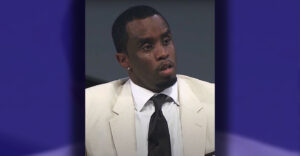A newspaper is not, of course, a living thing.
Advertisement
It is, by its humblest definition, ink on paper, and that is the way it has been for a very long time. For the Chicago Tribune, that time began June 10, 1847, and over the next several Sundays, we will chart the 175-year history of this newspaper.
That is, of course, a lot to bite off, for it is a story that has unfolded against the backdrop of this remarkable city. Chronicling Chicago, as well as the “outside” world, has made for a colossal pile of Tribune pages, full of triumphs and tragedies, oddities and oddballs, events and people both wonderful and wild.
Advertisement
[ [Read more] Chicago Tribune’s 175th anniversary ]
I hope to surprise you with some things you might never have known, enlighten you and even amuse you. Curious about how the paper covered the St. Valentine’s Day Massacre? The first White Sox game? Would you like to know, for instance, the part the Tribune played in creating “Little Orphan Annie” or how the infamous “Dewey Defeats Truman” headline happened?
Who coined the phrase “World’s Greatest Newspaper” after previously calling the Tribune merely “Chicago’s Greatest Daily”? When did the famous “Injun Summer” appear and when, and why did it vanish? What did the paper call “the world’s most beautiful office building”?
I hope some of you will be reminded of headlines past and of writers and photographers once part of your daily lives, along with those still laboring to bring you the news today. Others, we hope, will be reminded that a newspaper plays a vital role in building community, fostering debate on important issues and political decisions.

Journalism is, it has been said to the point of cliche, the first rough draft of history. There have been other definitions, of course, one offered by the city’s 48th mayor, Richard J. Daley, who said, “A newspaper is the lowest thing there is.”
Advertisement
When the Tribune was born, Chicago was in its infancy, having been incorporated as a city just a decade before. Its streets were clamorous and raucous, but many of its 17,000 or so citizens could see that the city was building rapidly, though none could foretell its future.
On the day of the newspaper’s birth, 400 copies were printed and sold for three cents each. The four-page publication contained little news and a few opinions, and those basically existed to take up space between advertisements.
[ [Don’t miss] Vintage Voices: A look back at Chicago Tribune columns through the years ]
The streets are now paved (no less noisy), but the essence of how news is gathered and delivered, even in the face of stunning technological leaps, remains the same as it has always been: get the story and get it to the readers.
The ways in which this has been accomplished have changed through the decades — though always with an emphasis on speed — and so have the means by which news is gathered. Indeed, even the notion of what constitutes news has undergone frequent redefinition. But the Tribune’s birth coincided neatly with an era in which the world was rapidly shrinking, making news of people and events more readily available and more rapidly transmitted.

The Tribune has shared this city’s history and, in ways that might surprise, it has also helped to shape that history and you will read about how. You will learn of some of the strong personalities who guided the newspaper — among them Joseph Medill, William Bross, Joseph Petterson and the larger-than-life Robert R. McCormick — and see how the newspaper covered the city’s world fairs and bloody gangsters, mayors and madams, the birth of the skyscraper and the flights of Michael Jordan. Surely, the city would exist without the Tribune, but I’m glad the newspaper has been here, and remains here, to tell its tales.
I have been selected to write these stories, I suppose, because I have written many stories about the city’s past. As well, my history with newspapers, and this newspaper specifically, goes deep. I have worked here for more than three decades, but every member of my family called this publication home.
Advertisement
My mother, then Marilew Cavanagh, walked into this building for the first time in the summer of 1937. She had just turned 18. She did many things at the paper, working in the travel department, the fashion department, writing synopses of movie reviews, writing memos and handling many chores for various section editors.
She also got to know the boss at the time, Col. Robert R. McCormick, who took a liking to her and often asked her to walk the dog — a German shepherd, Lotta, so named because she had a lot of puppies — that he brought with him to Tribune Tower each day. “The colonel was a presence,” she told me. “And he scared everybody half to death.”
She left the tower shortly after marrying her first husband in 1940. When she did, an in-house publication devoted half a page to the event. Under a headline that read “Marriage of Marilew Saddens the Boys in Editorial” were the signatures of dozens of editors and reporters.
One signature not on that page was that of my father, Herman Kogan, who had started working nights as a rewrite man at the tower in 1939 and thus didn’t meet the woman who would be his wife and my mother until years later. He left the paper and the city to fight in World War II as a Marine Corps correspondent, and then he worked for the Sun-Times and Daily News.

My younger brother Mark worked here as an intern and copy editor for three summers in the early 1970s while attending Medill School of Journalism at Northwestern University.
I grew up in a home and in an era in which newspapers were held in high, almost holy, regard. That was reflected by what I would see and read walking into the lobby of the Tribune’s former home in the tower by the river, a quote from playwright Arthur Miller carved into the wall: “A good newspaper, I suppose, is a nation talking to itself.”
Advertisement
My first story appeared in this paper on Jan 21, 1973. I started regularly contributing stories in 1985 and was a few years later hired as a full-time employee. I have written thousands of stories for the paper, and through this series I will attempt, with the considerable collaborative efforts of colleagues Marianne Mather, Kori Rumore and Jocelyn Allison, to fight the urge to self-indulgence, self-aggrandizing and chest-thumping. I will strive for something that is not hagiography but rather offers you subjective highlights (and some lowlights) from the paper’s past.
As Lloyd Wendt, a distinguished newspaperman and collaborator with my father on many books about Chicago history, wrote in his magisterial 1979 book, “Chicago Tribune: The Rise of a Great American Newspaper,” “The metropolitan newspaper never sleeps, never rests, but writes its autobiography in daily book-length segments.”
[ [Don’t miss] Were you a Tribune newspaper carrier? Share your story. ]
Before coming to the Tribune, I worked for the Daily News and the Sun-Times, and the Daily News comes to mind now. The great writer/editor M.W. Newman wrote the eulogy for the paper, a lyrical piece of journalism that started on the paper’s final front page on March 4, 1978, and ended like this: “The writer’s newspaper ends as it began — a momentous Book of Life. But that story isn’t over, just the Daily News’ part of it. A newspaper dies, but newspapering goes on. Life goes on, the sequel and all the tomorrows after that.”
You may be reading this on a computer or a phone or perhaps the old fashioned way of ink on paper. In whatever way this is coming to you, it is brought by the latest gathering of hundreds of people working every day to give you various forms of the Tribune, and hundreds of thousands of you are still reading it. That’s a story worth telling. The point, I suppose, is that solid and energetic journalism is not a luxury but an essential, no matter how delivered.
Newman was correct, of course. Tomorrows await, but now it’s time to revisit the yesterdays.
Follow along with all of our 175th anniversary coverage and sign up to receive a special edition of Daywatch in your inbox with anniversary coverage.







